Countries with the biggest income disparity
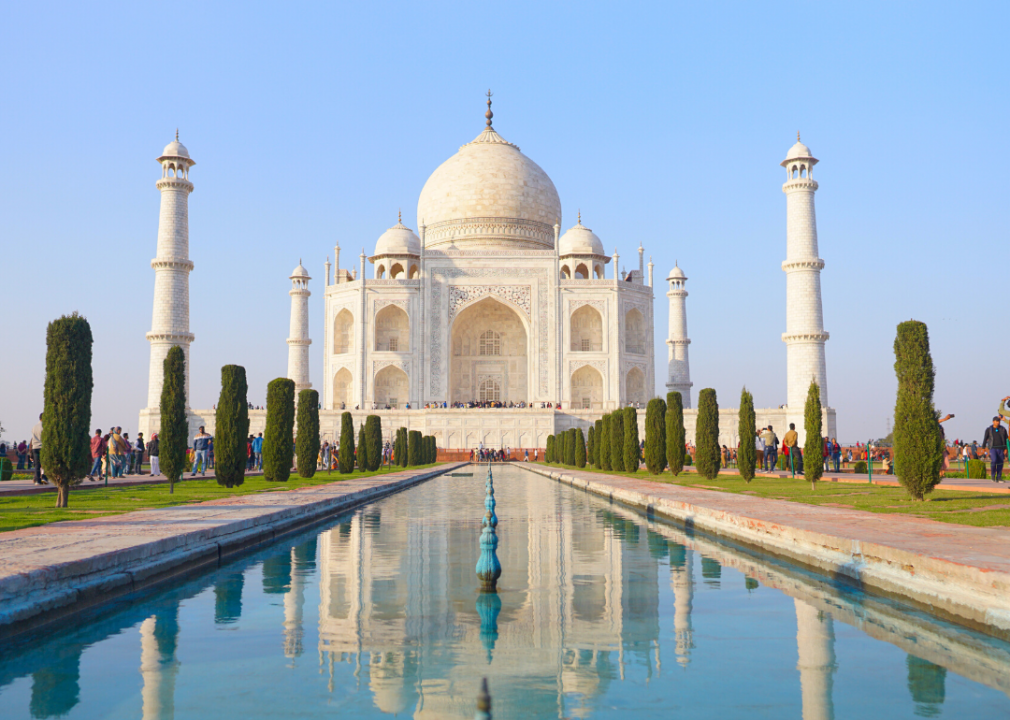
Izlan Somai // Shutterstock
Countries with the biggest income disparity
Income disparity has been growing in the U.S. since 1980, and with it comes dwindling economic opportunity and upward mobility for the millions of Americans trapped in poverty. Globally, income inequality has decreased slightly but remains high. Inequality between countries is wide, a phenomenon notably on display in the COVID-19 vaccine gap, which has resulted in wealthy countries vaccinating their populations at significantly higher rates than poor countries.
Using 2018 data from the World Economic Forum (WEF), the most recent data of its kind available, Stacker compiled a list of countries with the largest income disparity, also known as income inequality. From this data, released in 2019, we ranked the 25 countries with the most unequal income distributions.
The WEF used a metric called the net income Gini index, which measures the extent to which the net distribution of income (after taxes and other income transfers) among a country’s population deviates from an equal distribution. In this way, a Gini index of “0” would be a perfectly equal income distribution, whereas an index of “100” would be perfectly unequal. In other words, the higher the number, the higher the income inequality in that country.
While the countries are ranked based on the net income Gini index, we have also included a few other statistics for each country on the list: the wealth Gini index, median income, and the poverty rate.
The wealth Gini index, like the net income Gini index, is a measure of inequality. Just like the net income Gini index, a higher number means a higher level of inequality. The difference is that wealth is the total value of a person’s assets, whereas income is the amount a person receives for their services. The median income is a way to measure the average daily income per person in that country (all 25 countries on the list are under $20 per day). The poverty rate is the percent of that country’s population with less than half of the median income.
The net income Gini index for the United States is 37.80 (ranked at #50 of 103 countries measured). The United States’ wealth Gini index is 85.60 (#6 most unequal of 103 countries).
Keep reading to see which economies boast the highest income inequality.
You may also like: The most unionized states
![]()
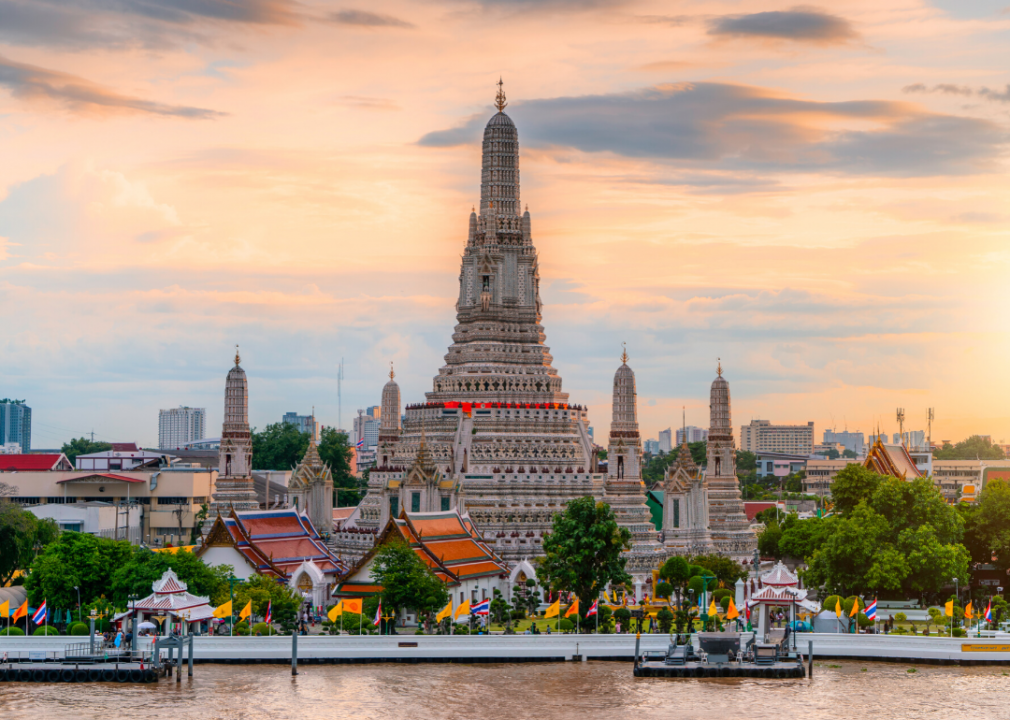
Jack Bkk // Shutterstock
#25. Thailand
– Net income Gini index: 43.7
– Wealth Gini index: 85.1 (#7 most unequal wealth of 103 countries)
– Median daily income: $11.20
– Poverty rate: 1.1%
A free-market economy with generally pro-investment policies, Thailand is frequently cited as an economic development success story. The agricultural sector, however, employs about one-third of the labor force while only contributing about 10% of GDP. Despite its substantial poverty reduction efforts, including a national minimum wage and tax reform, this economic structure likely accounts for its income disparity.
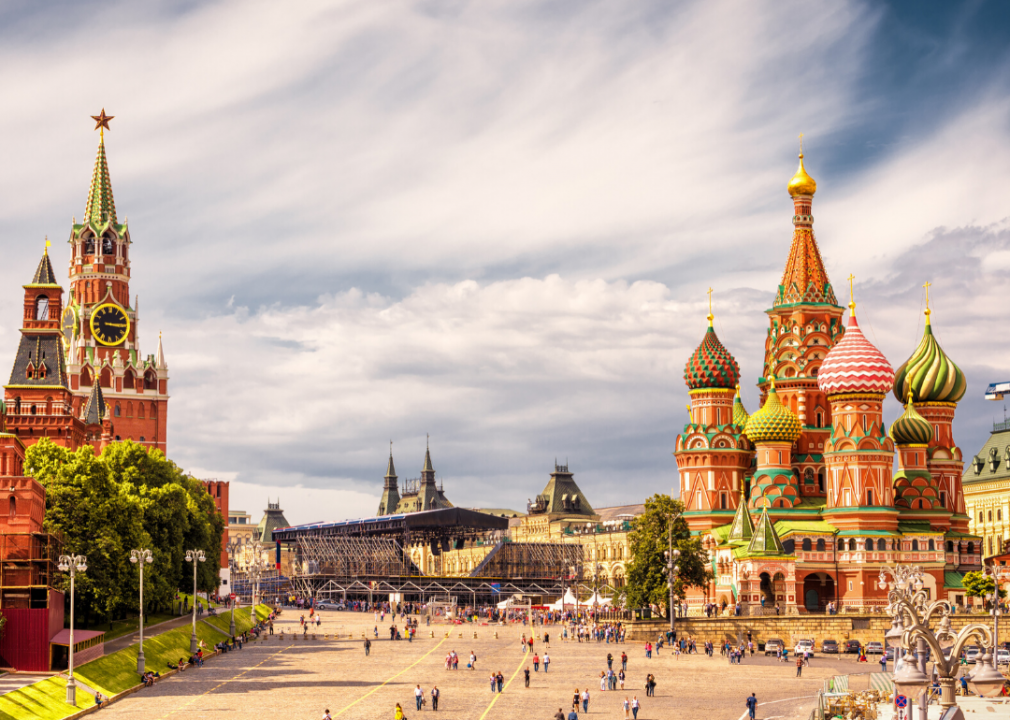
Viacheslav Lopatin // Shutterstock
#24. Russia
– Net income Gini index: 43.9
– Wealth Gini index: 82.6 (#14 most unequal wealth of 103 countries)
– Median daily income: $17.10
– Poverty rate: 0.3%
Russia’s economy continues to be defined by the collapse of the Soviet Union in 1991. The move from communism to a market economy carried with it high public corruption, with a large wealth concentration in the hands of oligarchs and government officials. International economic sanctions and lower commodity prices have combined in recent years to reduce growth rates.
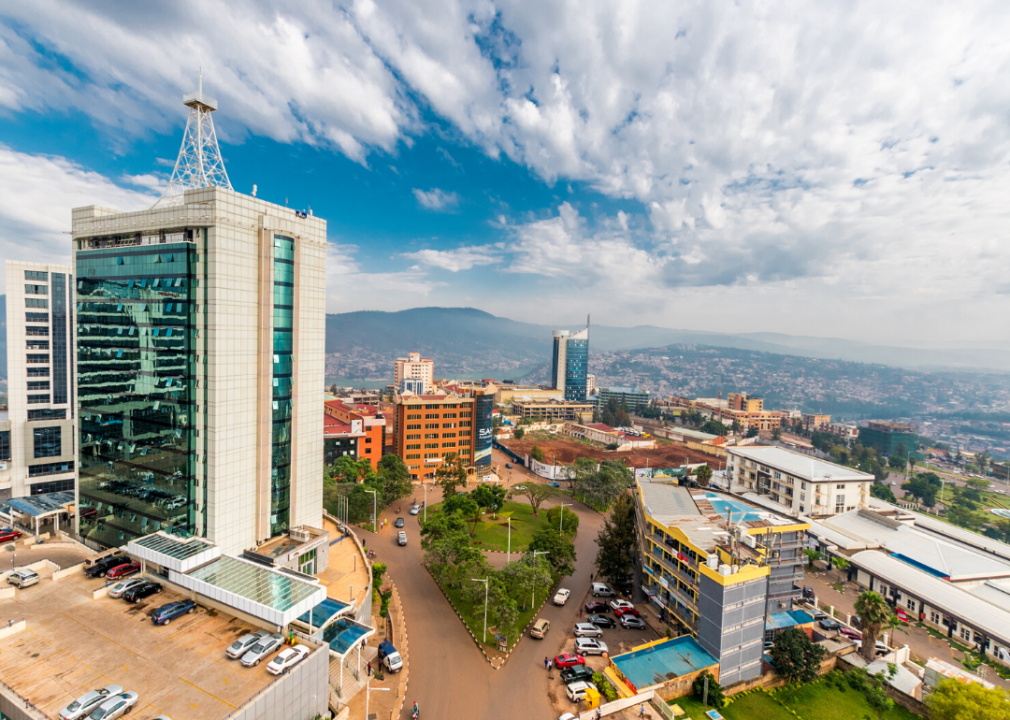
Jennifer Sophie // Shutterstock
#23. Rwanda
– Net income Gini index: 44.3
– Wealth Gini index: 73 (#43 most unequal wealth of 103 countries)
– Median daily income: $1.60
– Poverty rate: 81.5%
Agriculture accounts for about 30% of Rwanda’s GDP and about 75% of its labor force. The 1994 genocide was a significant setback for attracting external investment, but the country has made strides in recent years in diversifying its economy. But with a poverty rate of 81.5%, inequality is less of an issue than overall development.
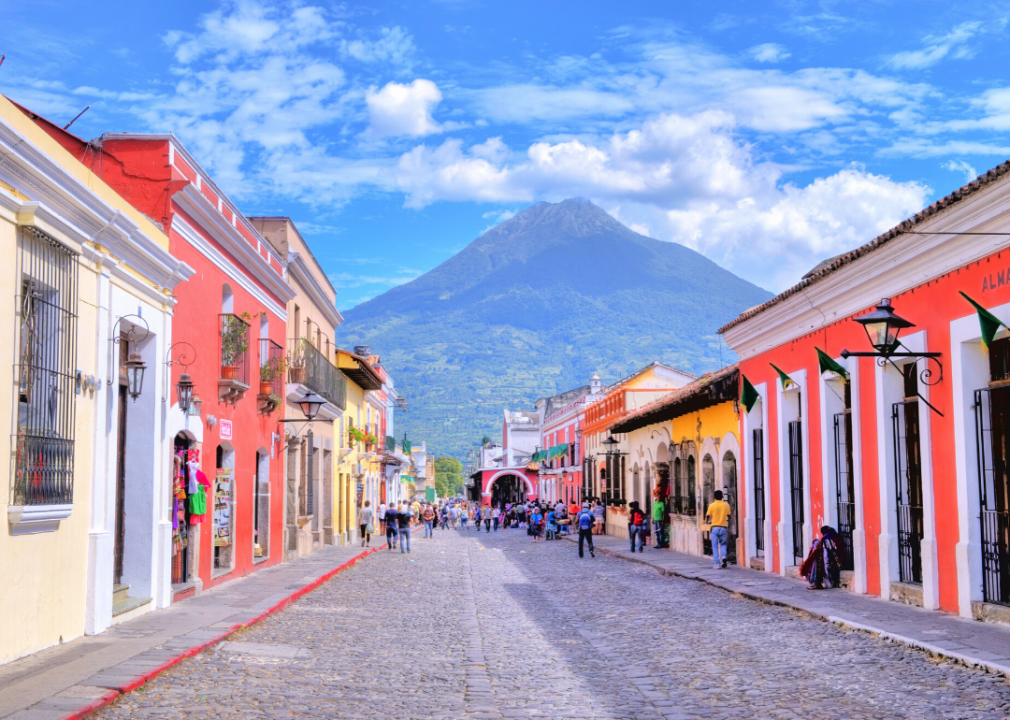
Kobby Dagan // Shutterstock
#22. Guatemala
– Net income Gini index: 44.5
– Wealth Gini index: not available
– Median daily income: $5.60
– Poverty rate: 25.3%
Guatemala is the most populous country in Central America, with over 40% of its population being indigenous groups. Despite free trade agreements and an end to its civil war more than 25 years ago, the indigenous population issue continues to be a driving factor in Guatemala’s income disparity.
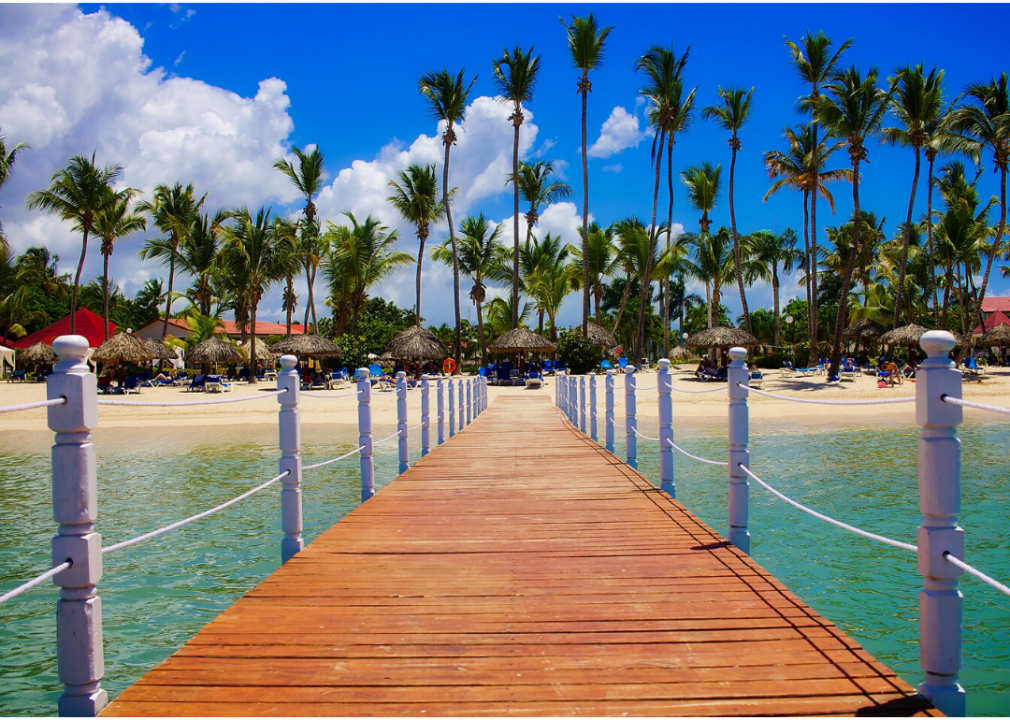
Pixabay
#21. Dominican Republic
– Net income Gini index: 44.6
– Wealth Gini index: not available
– Median daily income: $9.80
– Poverty rate: 6.9%
Despite a growing diversification in its economy, with services overtaking agriculture as the largest employer, high unemployment and underemployment remain significant obstacles. Although tourism, construction, and free trade have all grown, income disparity is still a defining feature of the Dominican Republic’s economy.
You may also like: The best streaming services in 2021

Leonid Andronov // Shutterstock
#20. Tajikistan
– Net income Gini index: 44.7
– Wealth Gini index: 53.5 (#93 most unequal wealth of 103 countries)
– Median daily income: $5.30
– Poverty rate: 20%
As a predominantly mountainous country with weak infrastructure that experienced a civil war in the mid-1990s, Tajikistan is the poorest of the former Soviet republics. Mineral extraction and hydropower are the most important industries, but employment opportunities remain low. Unattractive business policies and narcotics continue to be barriers to external investment.

Don Mammoser // Shutterstock
#19. Paraguay
– Net income Gini index: 44.9
– Wealth Gini index: 75.2 (#32 most unequal wealth of 103 countries)
– Median daily income: $11.70
– Poverty rate: 7.4%
Paraguay’s public corruption and insufficient infrastructure are significant obstacles to external investment. Conversely, cheap labor, corporate tax rates, and energy costs from hydropower have spurred some recent industrialization. However, a large informal sector of re-exports, microenterprises, street vendors, and subsistence agriculture may skew economic statistics.
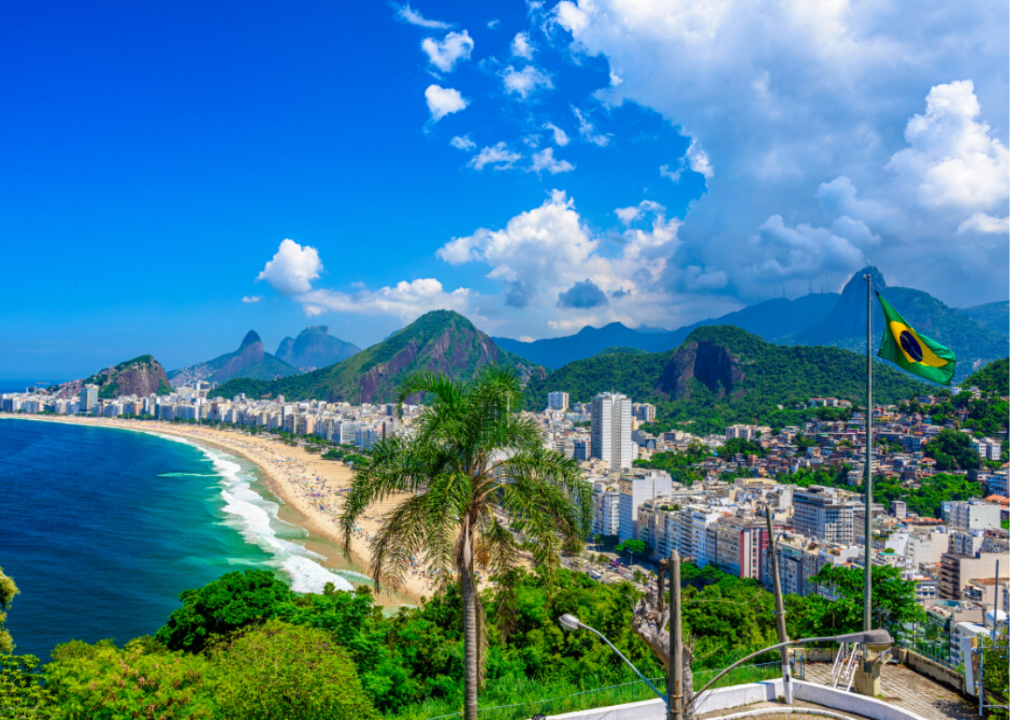
Catarina Belova // Shutterstock
#18. Brazil
– Net income Gini index: 44.9
– Wealth Gini index: 83.2 (#12 most unequal wealth of 103 countries)
– Median daily income: $11.20
– Poverty rate: 9.3%
Brazil is the world’s eighth-largest economy, but in recent years has been hampered by public corruption scandals reaching to the highest levels of government. Before the COVID-19 pandemic struck unemployment had been falling in recent years due to workforce development policies, mainly at the expense of external investment.
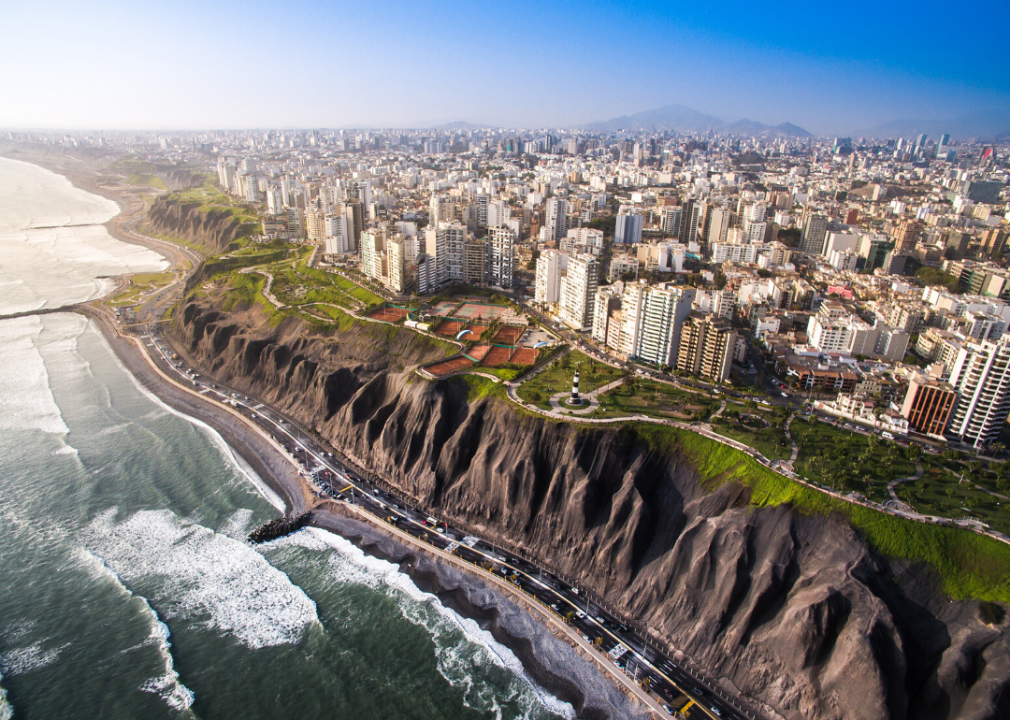
Christian Vinces // Shutterstock
#17. Peru
– Net income Gini index: 45.4
– Wealth Gini index: 77.8 (#26 most unequal wealth of 103 countries)
– Median daily income: $10.30
– Poverty rate: 9.3%
With varied geography but poor infrastructure, Peru’s economic growth in recent decades has not eliminated inequality. Recent economic stimulus packages have included cash transfer policies that reduced poverty, but external investment has continued to fall due to reduced mineral prices.
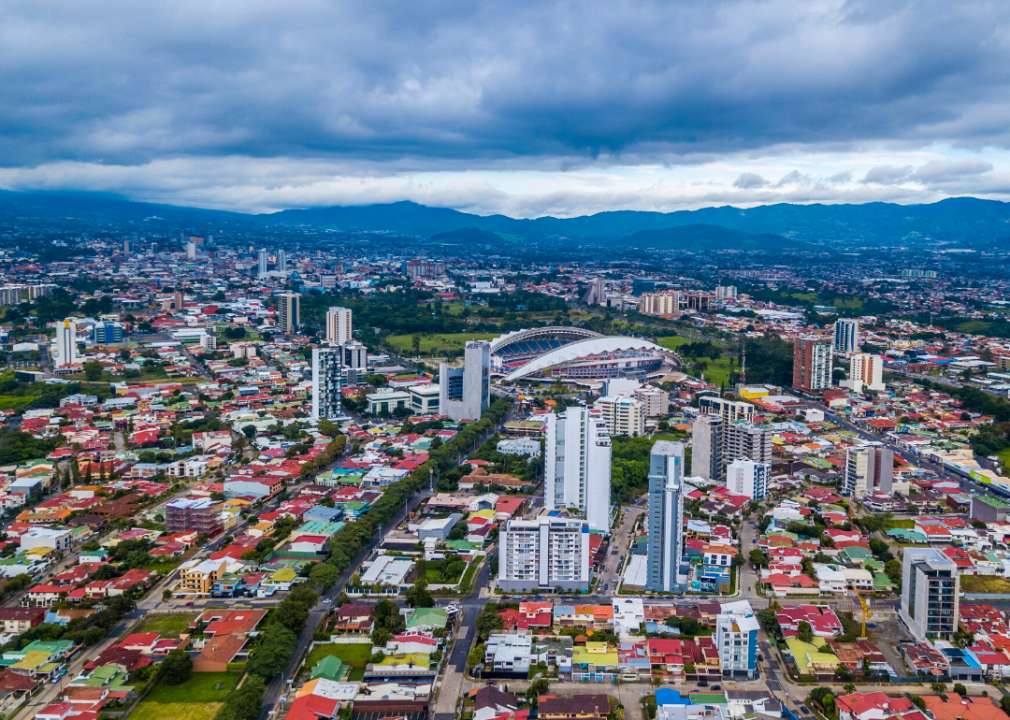
Gianfranco Vivi // Shutterstock
#16. Costa Rica
– Net income Gini index: 45.7
– Wealth Gini index: 69.4 (#57 most unequal wealth of 103 countries)
– Median daily income: $14.50
– Poverty rate: 4.2%
Stable economic growth, high foreign investment, political stability, and high education levels (relative to the region) are all positive indicators for Costa Rica’s economic future. Conversely, poor infrastructure, structural issues, and the high cost of energy remain barriers to increased diversification. Additionally, entitlements are in jeopardy due to growing public debt.
You may also like: Best public high schools in every state
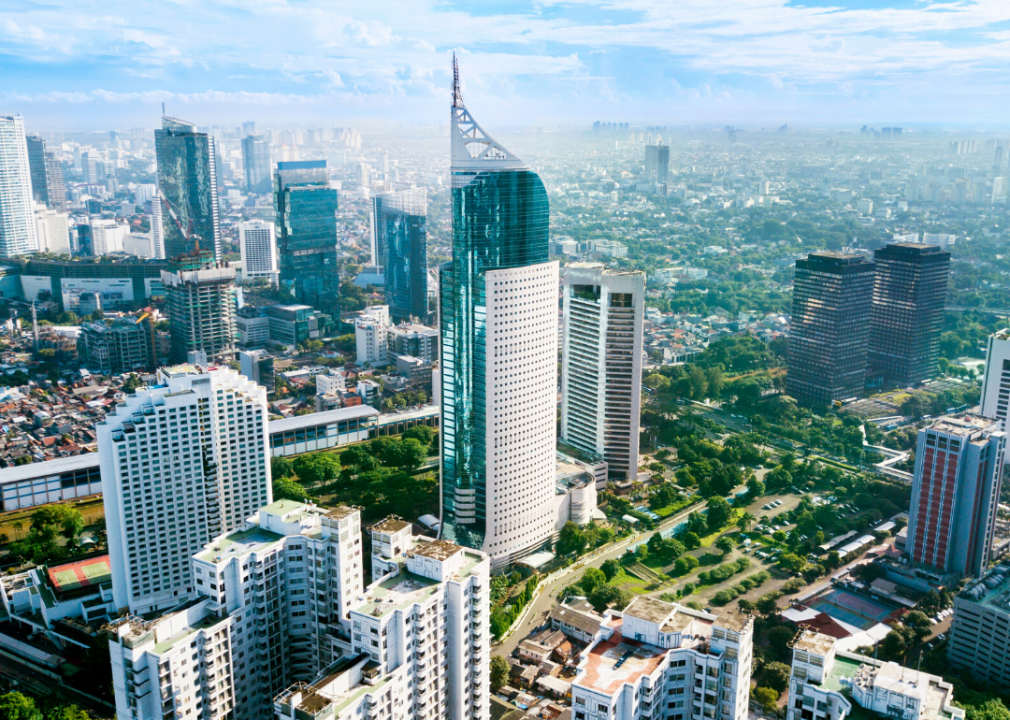
Creativa Images // Shutterstock
#15. Indonesia
– Net income Gini index: 45.7
– Wealth Gini index: 83.7 (#10 most unequal wealth of 103 countries)
– Median daily income: $4.60
– Poverty rate: 33.8%
Indonesia is the largest economy in Southeast Asia, and the country joined China and India as the only members of the G20 to grow their economies during the global financial crisis of 2008–2009. High poverty, unemployment, corruption, and poor infrastructure are continued challenges to its economic development. The government has addressed the infrastructure problem, but much remains to be done.

emperorcosar // Shutterstock
#14. Mexico
– Net income Gini index: 45.9
– Wealth Gini index: 73.2 (#42 most unequal wealth of 103 countries)
– Median daily income: $6.90
– Poverty rate: 11.8%
The world’s 11th largest economy is increasingly characterized by the effects of free trade agreements with its North American neighbors. The current government has led sweeping economic reforms aimed at spurring growth and reducing income inequality.
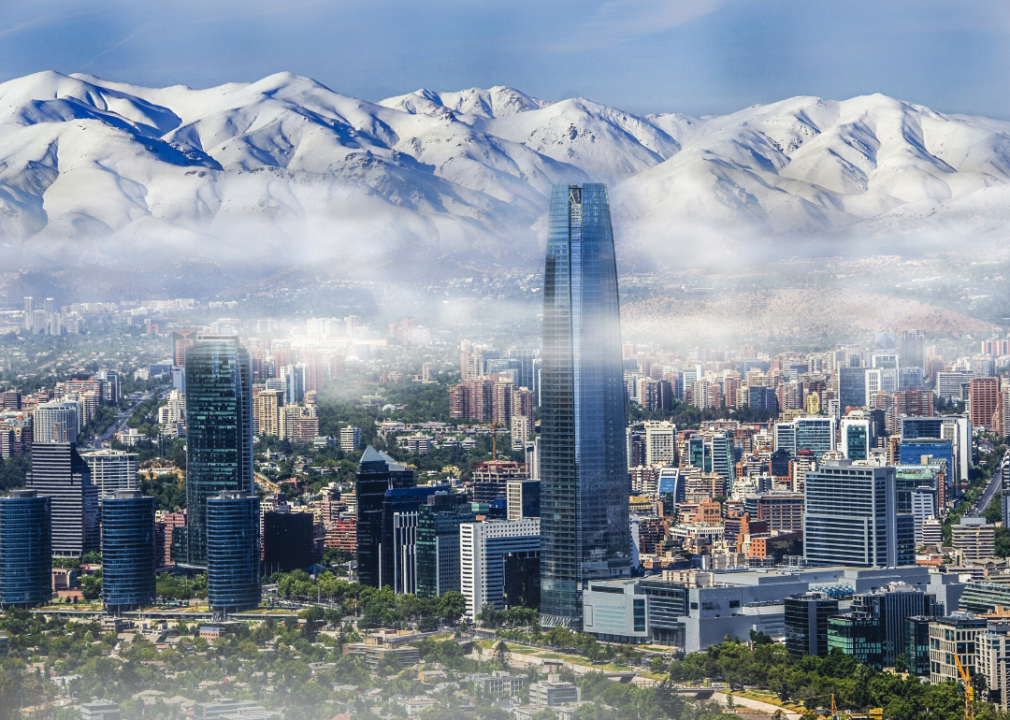
Marianna Ianovska // Shutterstock
#13. Chile
– Net income Gini index: 45.9
– Wealth Gini index: 78.6 (#25 most unequal wealth of 103 countries)
– Median daily income: $14.20
– Poverty rate: 3.1%
With a market-based economy, pro-trade policies, and solid financial institutions, Chile has a robust economic reputation in Latin America. Its penchant for accumulating fiscal surpluses in sovereign wealth funds led to growing cries for the government to address mounting inequality. Tax reforms enacted in 2014 may help reduce inequality and improve access to education and health care.

SL-Photography // Shutterstock
#12. Panama
– Net income Gini index: 46.1
– Wealth Gini index: 76.3 (#29 most unequal wealth of 103 countries)
– Median daily income: $14.50
– Poverty rate: 7%
What most Americans know Panama for is surprisingly still valid in characterizing its economy—the Panama Canal. Panama’s economy is dominated by its services sector, including operating the canal, logistics, ship registry, and insurance. It is also a hub for offshore banking (think back to the Panama Papers). While poverty has dropped significantly in the past two decades, income disparity has not evened out despite its strong economic and financial performance.

eFesenko // Shutterstock
#11. Egypt
– Net income Gini index: 47
– Wealth Gini index: 91.7 (#2 most unequal wealth of 103 countries)
– Median daily income: $4.90
– Poverty rate: 16.1%
Despite a reasonably open and relatively diverse economy, impoverished living conditions and employment factors were primary socioeconomic drivers in the 2011 Arab Spring uprising. Ironically, the political uncertainty this fostered has limited Egypt’s economic prospects thus far. High unemployment and inflation are significant obstacles to reducing inequality.
You may also like: The best streaming services for sports in 2021

Izlan Somai // Shutterstock
#10. India
– Net income Gini index: 47.9
– Wealth Gini index: 83 (#13 most unequal wealth of 103 countries)
– Median daily income: $2.90
– Poverty rate: 60.4%
The world’s second-largest country by population, India is still a work in progress with integration into the world economy. Positive indicators include the country’s diverse economy, a large population of young, educated, English-speaking people, and strong sustained growth rates. However, negative factors abound, such as high poverty, enduring discrimination, an ineffective judicial system, and overwhelming urbanization.
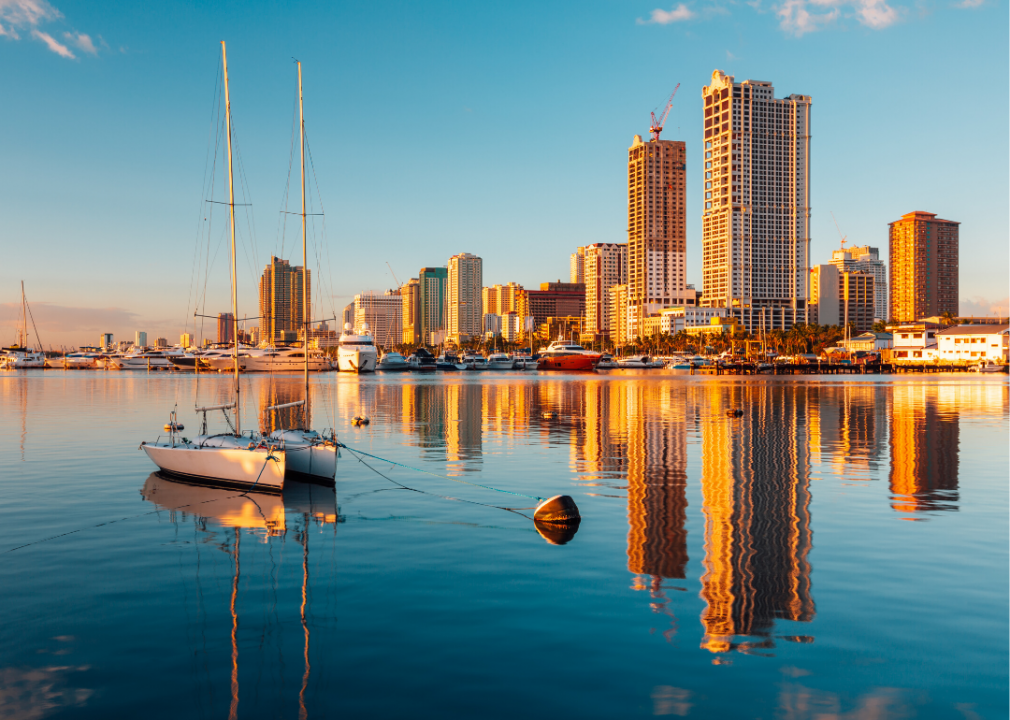
Joseph Oropel // Shutterstock
#9. Philippines
– Net income Gini index: 47.9
– Wealth Gini index: 83.9 (#9 most unequal wealth of 103 countries)
– Median daily income: $5.00
– Poverty rate: 33.7%
Despite solid economic growth rates and relatively resilient economic and financial systems, policy barriers to external investment and weak infrastructure have hampered inclusive growth. President Rodrigo Duterte, elected in 2016, promised to make poverty and inequality reduction the government’s top priority. It remains to be seen whether aggressive criminal, drug, and corruption efforts, coupled with significant infrastructure investments, will improve income disparity.
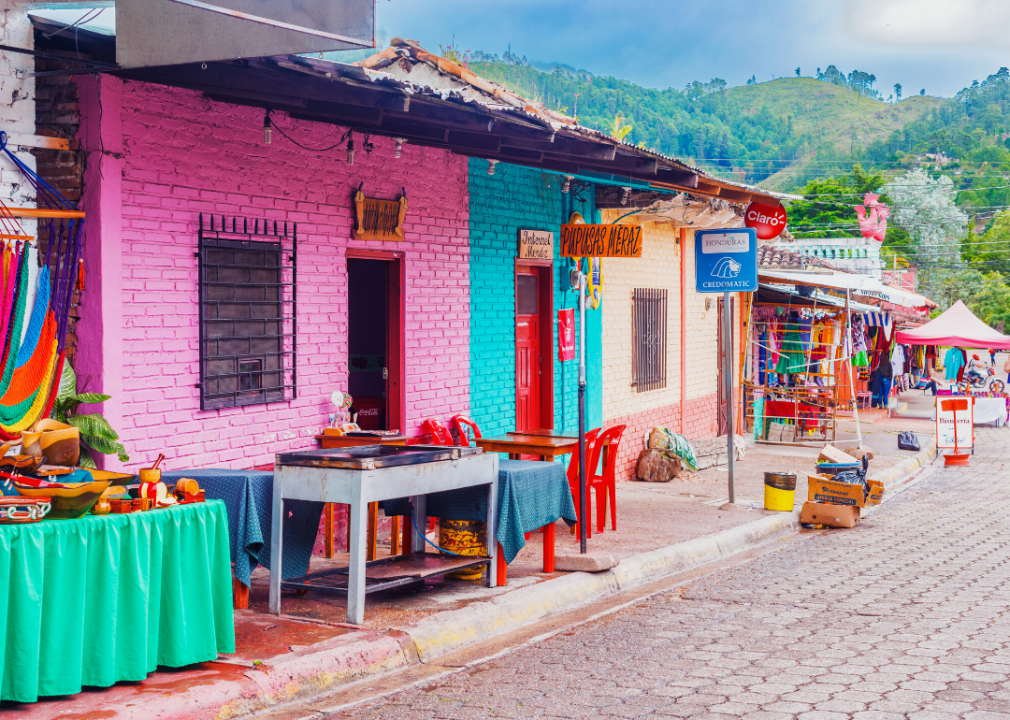
Marek Poplawski // Shutterstock
#8. Honduras
– Net income Gini index: 48.3
– Wealth Gini index: not available
– Median daily income: $4.80
– Poverty rate: 34.8%
Honduras is one of the poorest countries in Latin America, with some poverty estimates reaching as high as 65%. Some economic diversification and free trade agreements have buoyed investor confidence, but political insecurity, crime, corruption, and underemployment do not bode well for income distribution.
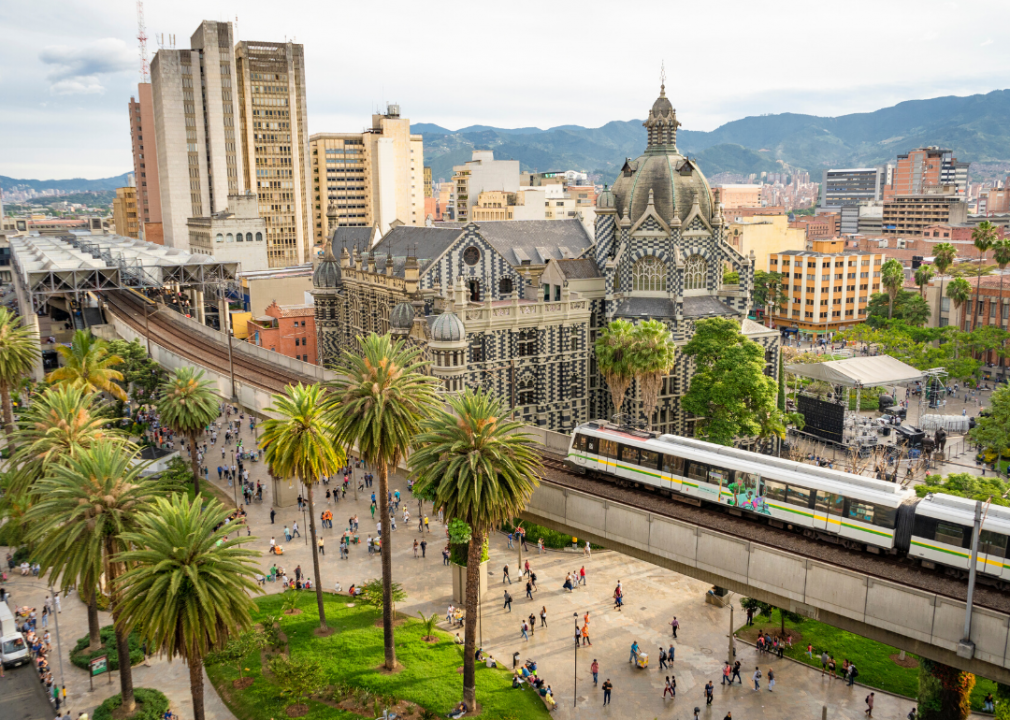
Alexander Canas Arango // Shutterstock
#7. Colombia
– Net income Gini index: 48.9
– Wealth Gini index: 74.2 (#34 most unequal wealth of 103 countries)
– Median daily income: $9.00
– Poverty rate: 13.1%
The 11th Latin American economy on the list is Colombia. Dependence on commodity exports such as oil, coffee, and coal, along with security challenges due to narcotics and political insurgency as well as poor infrastructure, all contribute to poor economic development and income inequality.
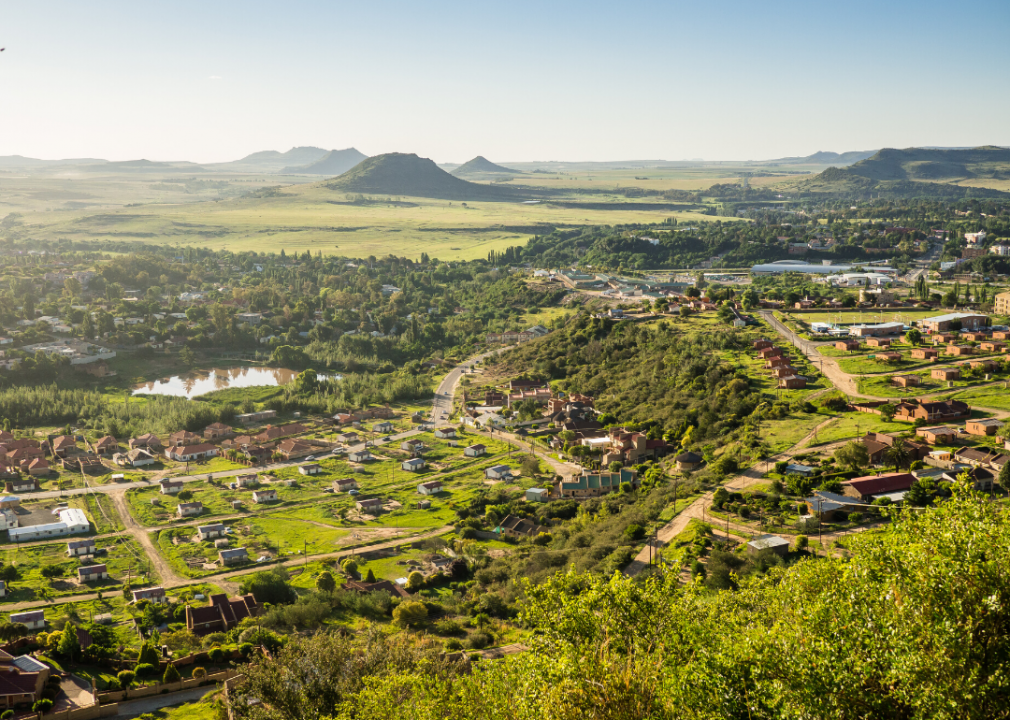
Sfriessner // Shutterstock
#6. Lesotho
– Net income Gini index: 49.3
– Wealth Gini index: 79.8 (#22 most unequal wealth of 103 countries)
– Median daily income: $1.50
– Poverty rate: 78%
The only enclaved country in the world outside of the Italian peninsula’s micro-countries, Lesotho is also among the poorest countries in the world. Over three-quarters of the population engage in subsistence agriculture, while the government relies heavily on modest customs duties for revenue. The textile and mining industries are Lesotho’s best export prospects but aren’t promising poverty and inequality indicators.
You may also like: 30 of the biggest scams in modern history
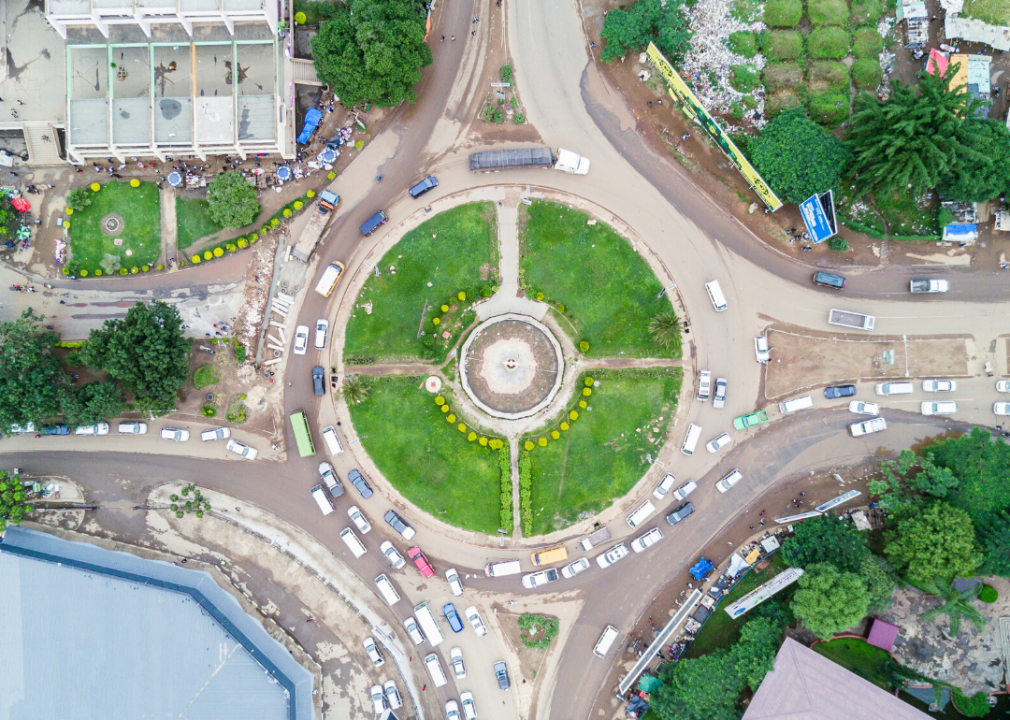
Gareth Zebron // Shutterstock
#5. Zambia
– Net income Gini index: 49.5
– Wealth Gini index: 81 (#19 most unequal wealth of 103 countries)
– Median daily income: $1.60
– Poverty rate: 74.3%
Despite solid economic growth in recent years, high poverty and unemployment exacerbated by a high birth rate and HIV/AIDS prevalence make Zambia one of the world’s worst in terms of income disparity. Its dependence on copper exports and poor economic diversity are not positive indicators for improving its position.
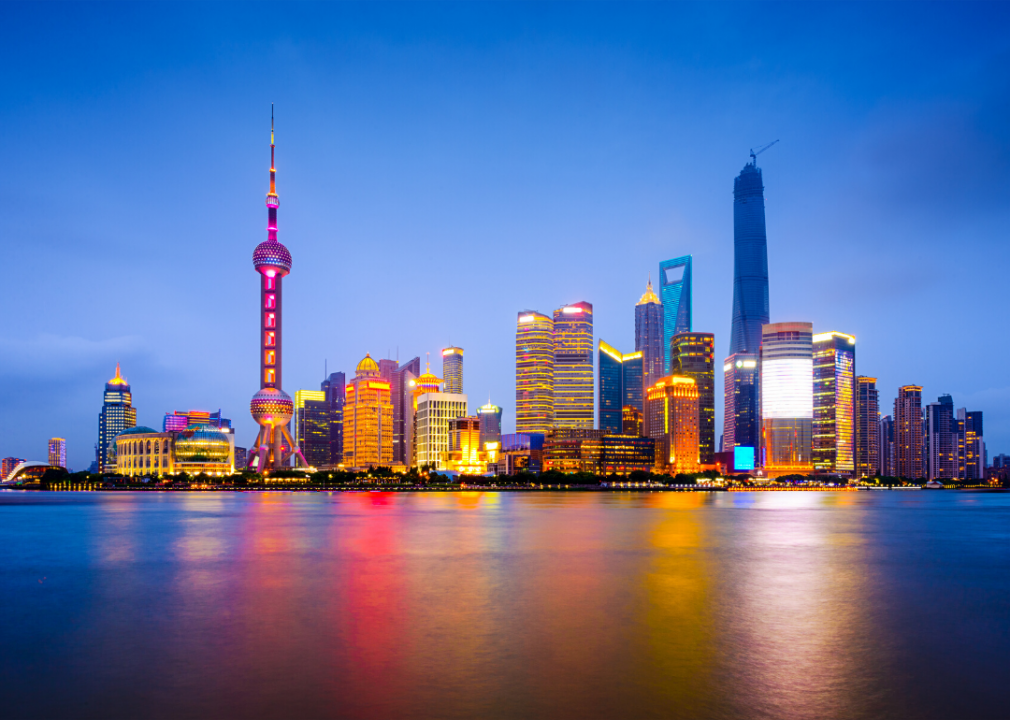
Sean Pavone // Shutterstock
#4. China
– Net income Gini index: 51
– Wealth Gini index: 78.9 (#24 most unequal wealth of 103 countries)
– Median daily income: $7.70
– Poverty rate: 12.1%
The world’s largest country by population became the largest economy (by purchasing power parity) in 2014, partially due to its transition from a centrally planned communist economy to an authoritarian capitalist system in the late 1970s. That move also eliminated the strict egalitarianism in income distribution, and China’s Gini index has skyrocketed since that time.
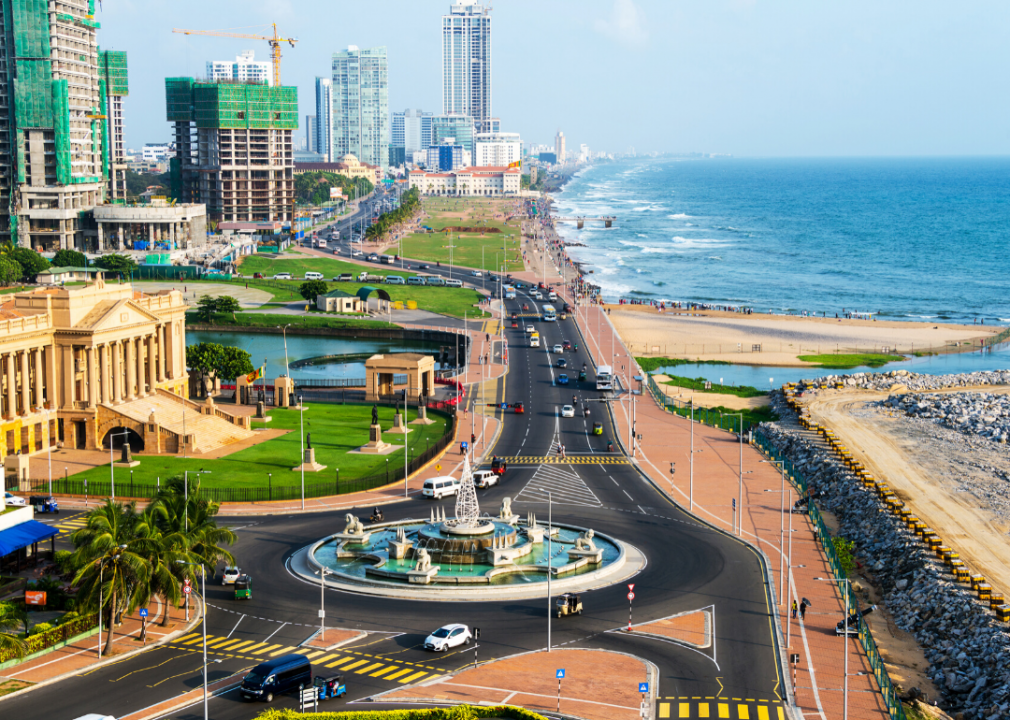
Madrugada Verde // Shutterstock
#3. Sri Lanka
– Net income Gini index: 51.4
– Wealth Gini index: 66.5 (#68 most unequal wealth of 103 countries)
– Median daily income: $5.50
– Poverty rate: 16.1%
Following the conclusion of its 26-year conflict with the insurgent Tamil Tigers in 2017 and an agreement with the International Monetary Fund in 2016, Sri Lanka is seeking to bolster its current robust economic growth. Recent trade agreements will help, but terrorist financing and money laundering remain concerns to trade partners and external investors. The government will need to reduce debt to finance education if Sri Lanka desires to reduce inequality and become the educated export-based economy it envisions.
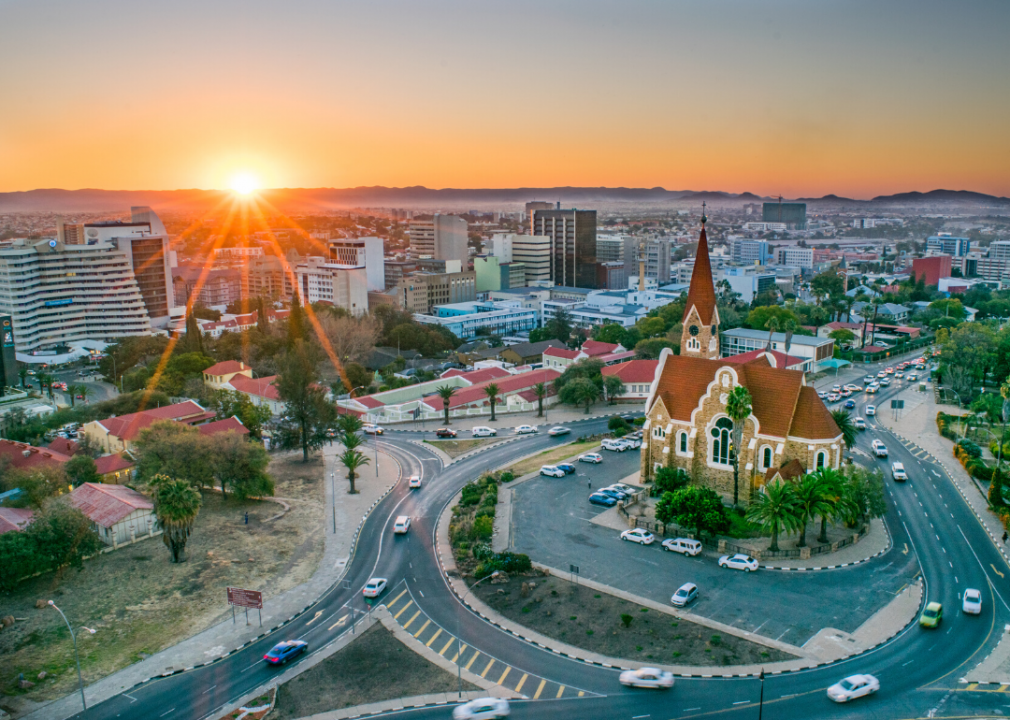
Nate Hovee // Shutterstock
#2. Namibia
– Net income Gini index: 55
– Wealth Gini index: 91 (#3 most unequal wealth of 103 countries)
– Median daily income: $3.50
– Poverty rate: 47%
Namibia is heavily dependent on commodity exports such as diamonds, uranium, and zinc, but market volatility is high due to price fluctuations and vulnerability to drought. A relatively high per capita GDP for the region belies the high poverty and inequality rates. The current government has tabled wealth redistribution schemes, but long-term fixes like value-added services for mineral exports and greater diversification are needed.
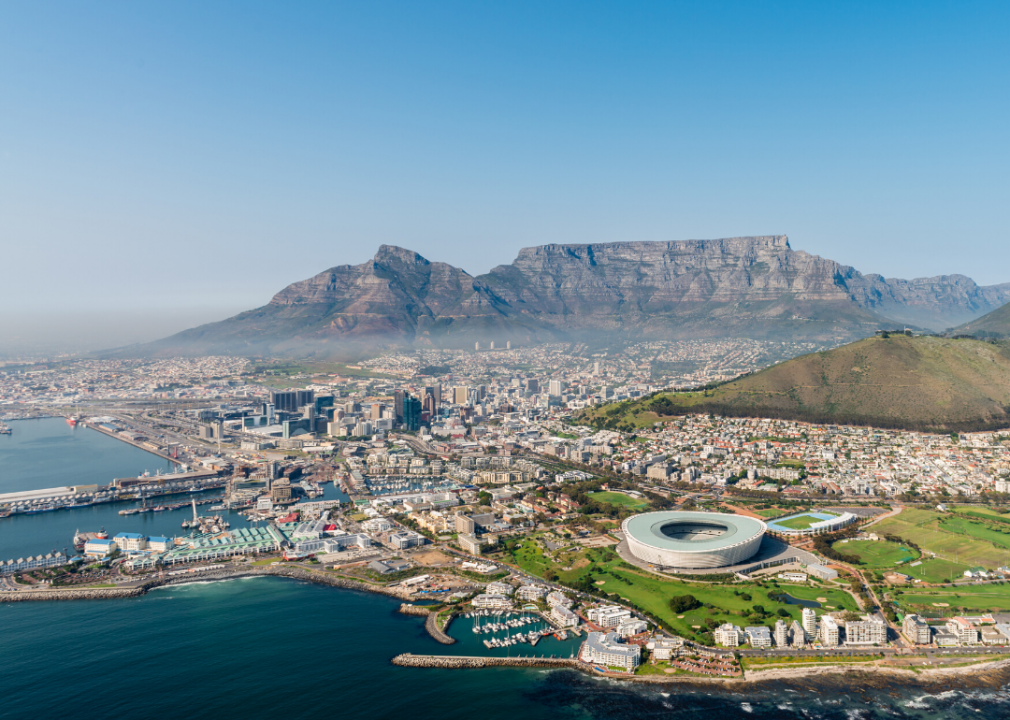
HandmadePictures // Shutterstock
#1. South Africa
– Net income Gini index: 57.7
– Wealth Gini index: 86.7 (#5 most unequal wealth of 103 countries)
– Median daily income: $4.70
– Poverty rate: 35.9%
With positive indicators such as developed financial, transportation, and energy infrastructure, South Africa has been one of the most promising emerging markets in recent years. However, rampant corruption and high unemployment and poverty have continued following the end of Apartheid in the early 1990s. Investor confidence has fallen precipitously in recent years, with credit agencies downgrading South Africa’s sovereign debt to junk bond status. Major political and structural changes are necessary if South Africa wants to improve its position on the income disparity list.
You may also like: The best streaming services for football in 2021